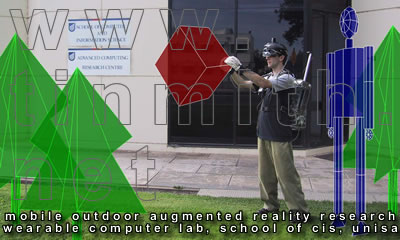Hello. We are the UT Arlington Library: GIS Services team within the Information Literacy Program Area. We had a most exciting Spring 2006 semester, and want to use this opportunity to show you who we are and what we have been up to this semester.
Meet the Faces:
 |
|  |
|  |
|Center: Kaushal Gala, Graduate Research Assistant
Right: Heather Perkins, Student Assistant
Workshops (http://library.uta.edu/gis/gisSeminars.jsp)
Workshops are our primary outreach mechanism. For folks new to geospatial technologies, these workshops demonstrate how mathematics and statistics are a lot of fun, especially when combined with geospatial technologies. For more experienced folks, we always include a new resource (such as a new dataset) or a new analysis procedure (such as geostatistical analysis).
We held three workshops this semester, with an average of 15 folks attending each workshop. The workshops were:
- To Catch a Thief
- Create Your Own Google Maps Mashup
- Where to Open a New Pizzeria in the Metroplex
We experimented this semester with broadcasting publicly available webcasts. 16 faculty and students attended these two webcasts and these will definitely continue in the Fall.
Class Instruction
We held 20 class instruction sessions this semester for the following subjects:
- Political Science
- Earth & Environmental Sciences
- Urban & Public Affairs
- Architecture
- Nursing
- Social Work
- Marketing
- Real Estate
- Criminal Justice
We offer 12.5 hours of walk-in assistance each week. As of April 26, we assisted 499 students during this semester (including phone and email questions). This is up from the 474 questions we answered last Fall. (We do not record the number of unique students/faculty who seek our help, but the average student returns once, and so we have helped app. 250 students.) Here is a breakdown of the students who we helped this semester:

New Outreach
We began working with numerous new faculty and students this semester, but the main accomplishment is our new relationships with the Criminal Justice department. After previous unsuccessful attempts to build relationships with this department, this semester’s workshop, ‘To Catch a Thief’ was incredibly effective. After this workshop, we were invited to provide 4 instruction sessions for 4 criminal justice classes. Hopefully, this is just the beginning.
New Datasets
This semester we acquired the entire premium AGS Demographic Dataset for the state of Texas. This provides blockgroup level (app. neighborhood level) demographics for demographics, purchase patterns, crime, environmental factors, personal finance, and other business information.
Development of the UT Arlington Library Geospatial Catalog (GeoSpat)
We have been working hard on the geospatial catalog this semester. This summer, we are planning to release a much improved version of our geospatial catalog. This new version will include improved and more complete metadata records, the ability to save and edit searches, and much more. It is not much to look at right now, but the development version can be found here: http://gis.uta.edu/geospat4.
Applications & Scripts
In addition to working on GeoSpat (above), we have programmed numerous smaller applications and scripts.
- ArcMap2GMap (http://gis.uta.edu/download/arcmap2gmap/ArcMap2GMap.exe, GIS software required to run). This script exports GIS data into Google Maps. Here are some samples:
- Paleomapper Script
- Developed a script that will take any GIS map and show you how that map would look during the geologic time period of your choice. This script was developed at the request of the Earth & Environmental Sciences department.
We referenced and digitized (vectorized) 11 scanned maps from SPCOÂ’s map collection. This gives us a total of 24 completed maps. The process of referencing and digitizing these maps enables replications of these maps to be used with geospatial technologies. Over the summer, our students and faculty (and off-campus friends) will be able to interact with these maps within GIS software, Google Earth, and online via mapping applications such as Google/Yahoo! Maps. If you are a Google Earth user, download this KMZ file to view the Colton 1855 map within Google Earth: http://gis.uta.edu/download/kmz/colton1855.kmz. Many more of these coming soon.
Professional Paper Presentation
Joshua Been and Dr. Jose Gutierrez (political science) co-wrote a paper on our collaborative work creating online maps displaying the Hispanic population projections in Texas through 2040. We presented this paper at the American Political Science Association: Teaching & Learning Conference last February. The paper can be found here: here.
Want to Keep Up With Our GIS Activities??
Check out the blog, Mapz: A GIS Librarian (http://mapzlibrarian.blogspot.com/).



